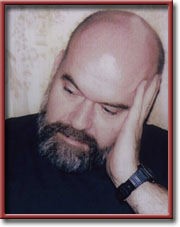Why I Love Bankers

“What’s not to love? They are the coolest con men around, with the most effective lobbyists and the most exaggerated, even chimerical, sense of victimization.” Sanford Rose
Dolors & Sense
By Sanford Rose

 KISSIMMEE Florida—(Weekly Hubris)—9/9/2013—What’s not to love? They are the coolest con men around, with the most effective lobbyists and the most exaggerated, even chimerical, sense of victimization.
KISSIMMEE Florida—(Weekly Hubris)—9/9/2013—What’s not to love? They are the coolest con men around, with the most effective lobbyists and the most exaggerated, even chimerical, sense of victimization.
They are supposed to perform two essential services: credit evaluation and what’s called maturity transformation, which means simultaneously accommodating the depositor’s preference for ready access to cash and the borrower’s desire for certainty in long-term credit costs—i.e., borrowing short and lending long.
In practice, that model is obsolete.
Banks are required credit evaluators only for very small business borrowers. Most other borrowers can now tell their credit stories directly to the bond markets and thus don’t need bank intermediation.
Banks rarely engaged in maturity transformation in the past. Instead, they both borrowed and lent long, since the maturity of the yield they paid on deposits changed sluggishly, if at all. In fact, most of the time banks paid only “implicit” interest—that is, no money but only the convenience of bank branches.
When banks switched from fixed- to floating-rate loans, they in effect abandoned their claim to being maturity transformers, since the maturity of the yield on a prime-based loan was quite short, corresponding to–and, in some periods, even falling short of—the weighted average maturity of total bank investable funds.
After the banks were bailed out of the financial crisis of 2008 by the government, their profit margins initially fattened, as they once again borrowed at a nominally short maturity and invested the proceeds in long-term bonds (they eschewed the riskier business loans) at reasonably high yields.
But after five years, most of these bonds have matured, forcing institutions to replace them with lower-earning ones. Since the bank borrowing cost was already approximately zero and could not go lower, the spread between the rate earned on assets and the rate paid on liabilities (called the net interest margin) started contracting, eliciting loud lamentations from industry leaders.
Banks thereupon began boosting earnings by reducing their loan-loss reserves. These reserves are built by subtracting likely future loan losses from current earnings.But if the reserve account becomes excessive, current period subtractions can be pared, and the preexisting reserve can even be invaded by feeding some of it back into earnings.
That’s what’s going on now and helps account for the recent good earnings reports from big banks, which have buoyed stock prices, not only of financial firms but those of non-financials as well.
Is the profit picture indeed so sanguine? The biggest banks still hold several hundred billion dollars in second mortgage loans on their balance sheets. Many of these loans are in good standing primarily because they are in the form of lines of credit on which the borrower is able to avoid amortization and pay only interest for up to ten years after taking out the loan.
If the economy remains more or less becalmed, continuing to add mostly the burger-flipper kind of part-time jobs in which it has been specializing of late, borrowers may have trouble staying current on home equity lines of credit once they have to begin those amortization payments.So loan losses that seem modest today could spike in a few years, forcing banks that boosted earnings by raiding their reserves to reverse course dramatically.
Meanwhile, banks continue to fool investors and the public by carrying the bulk of their assets on balance sheets at their historical, or booked, values rather than at their much lower market values. Thereby, they can sport equity cushions that appear plush but may ultimately prove thin to non-existent.
It’s a con banks have been running for decades. Although the con may still unravel, you can’t help admiring the enterprise of those responsible for it. Or can you?
![]()
Note: The photo accompanying this column derives from http://www.mintpressnews.com/new-capital-requirements-would-make-big-banks-more-responsible-for-their-investments/165120/ and was captioned: “Protesters Richard Hanzel, left, Brendan Hutt, and Richard Shavzin, right, of the Screen Actors Guild, dressed as wall street bankers, march from Goldman Sachs’ office to a rally in Federal Plaza demanding Wall Street reform, Wednesday, April 28, 2010, in Chicago. (AP/M. Spencer Green)”
One Comment
Alan Ichiyasu
HI SANFORD:
“NAILED THAT B_TCH” WITH A RAILROAD SPIKE!!!
IF YOU COULD JUST GET THE ABOVE PUBLISHED IN THE “THE ECONOMIST”, RIGHT AFTER 2013 THANKSGIVING.
YOURS,
ALAN